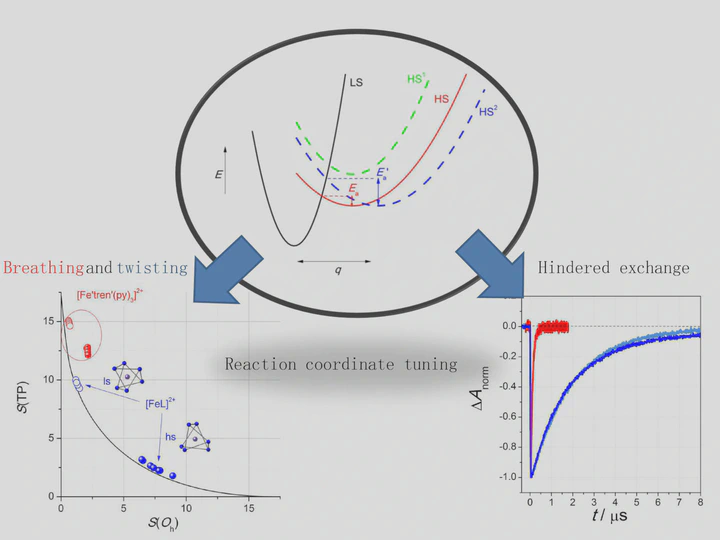Structural Dynamics of Spin Crossover in Iron(II) Complexes with Extended-Tripod Ligands

Abstract
Selective manipulation of spin states in iron(II) complexes by thermal or photonic energy is a desirable goal in the context of developing molecular functional materials. As dynamic spin-state equilibration in isolated iron(II) complexes typically limits the lifetime of a given spin state to nanoseconds, synthetic strategies need to be developed that aim at inhibited relaxation. Herein we show that modulation of the reaction coordinate through careful selection of the ligand can indeed massively slow down dynamic exchange. Detailed structural analysis of [FeL]2+ and [ZnL]2+ (L: tris(1-methyl-2-{[pyridin-2-yl]methylene}hydrazinyl)phosphane sulfide) with crystallographic and computational methods clearly reveals a unique trigonal-directing effect of the extended-tripod ligand L during spin crossover, which superimposes the ubiquitous [FeN6] breathing with trigonal torsion, akin to the archetypal Bailar twist. As a consequence of the diverging reaction coordinates in [FeL]2+ and in the tren-derived complex [Fe(tren)py3]2+, their thermal barriers differ massively, although the spin crossover energies are close to identical. As is shown by time-resolved transient spectroscopy and dynamic 1H-NMR line broadening, reference systems deriving from tren (tris-(2-aminoethyl)amine), which greatly lack such trigonal torsion, harbor very rapid spin-state exchange.